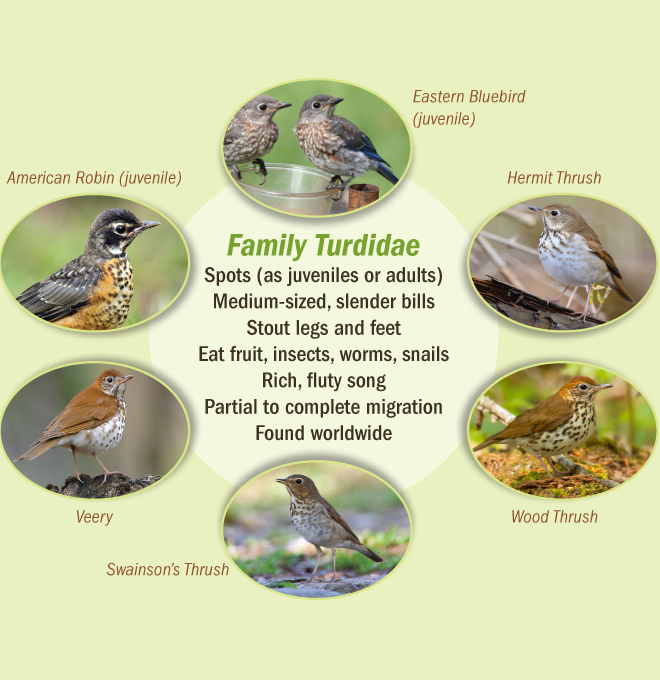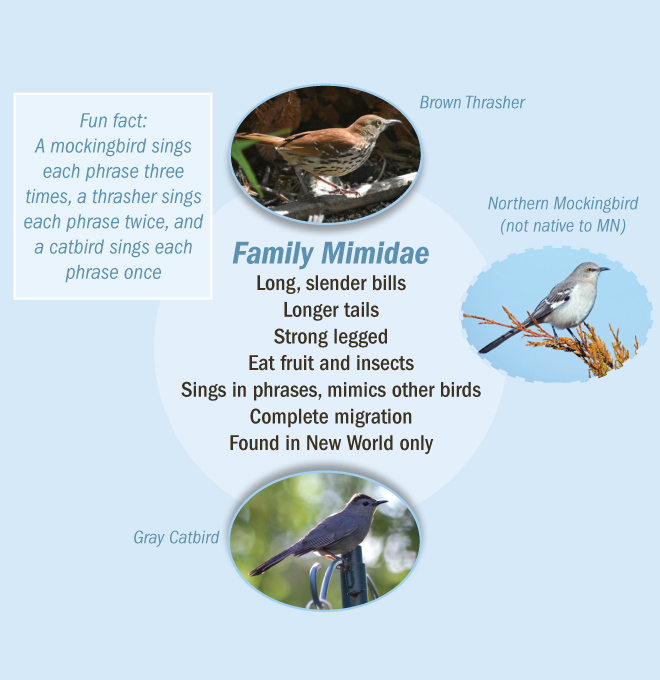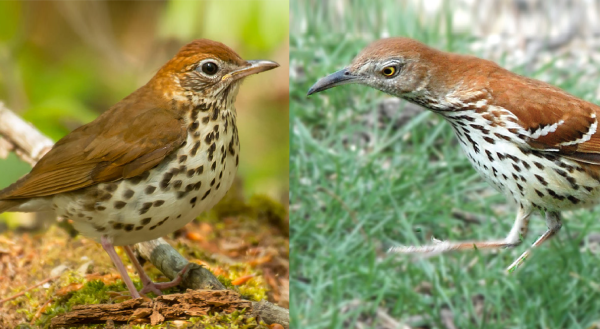Similar names, different families
With their beautiful songs, alliterate names and often remarkable resemblances, it’s easy to confuse thrushes and thrashers. Both are Passerine—perching—songbirds, but their family tree splits into unique branches.

Thrushes are part of the Turdidae Family
Turdids found in Minnesota include: American Robins, Eastern Bluebirds, Veerys, and Swainson’s, Hermit and Wood Thrushes. All are known for their large eyes, stout legs and feet, straight and medium-sized bills, and rich, flute-like songs.
Members of this family have spotted plumage as juveniles, although many species, like robins and bluebirds, shed their spots as adults.
In the Twin Cities area, we are most likely to see American Robins, Eastern Bluebirds and Wood Thrushes. Swainson’s and Hermit Thrushes and Veerys range in the more northern parts of our state.
Most turdids migrate, yet some robins and bluebirds may overwinter.
Thrashers are part of the Mimidae Family
Peterson’s Field Guide to Birds of North America describes mimids as “excellent songsters; some mimic other birds. Strong-legged, usually longer tailed than thrushes, bill usually longer and more decurved.”

Common members of Family Mimidae are Northern Mockingbirds, Gray Catbirds and Brown Thrashers, while only the latter two species are typical to Minnesota.
Stan Tekiela, author of Birds of Minnesota Field Guide, calls Brown Thrashers “prodigious singers” because the male has over 1,100 documented song types—the largest repertoire of all North American Birds.
Article originally published in the March/April 2020 Edition of the Bird’s-Eye View Newsletter
By Guest Contributor KATRINA HASE


